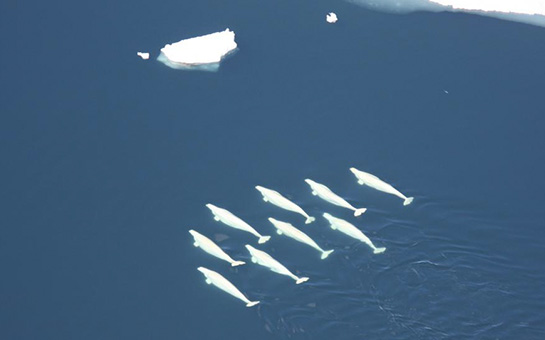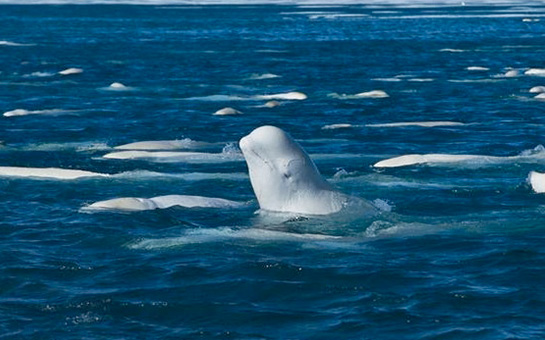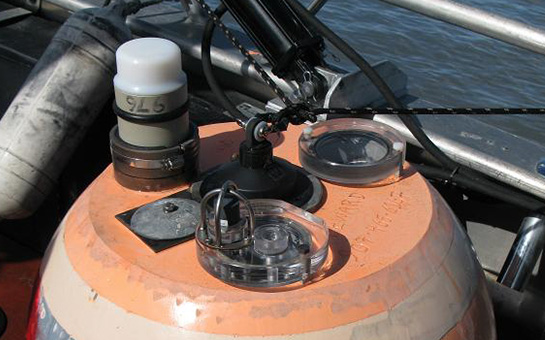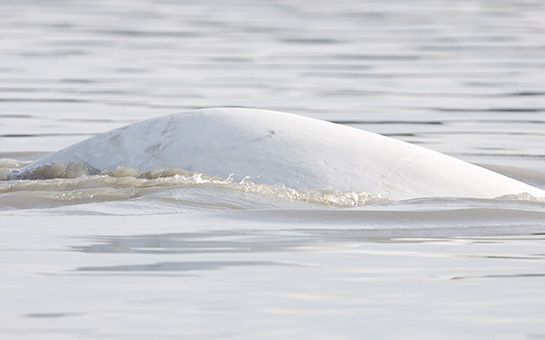Cook Inlet Project
Beluga whales (Delphinapterus leucas) occupy a discontinuous circumpolar distribution in waters ranging from 50°N to 80°N latitude, primarily along the coasts of Alaska, Canada, Greenland, and Russia. A genetically distinct population of belugas occurs in Cook Inlet, a 300 km-long estuary in south central Alaska that stretches northeast from the Gulf of Alaska to Anchorage. Cook Inlet beluga whales are impacted by a variety of anthropogenic activities, including coastal development, oil and gas exploration, shipping and military activities. The Cook Inlet population has declined from an estimated 653 animals in 1994 to 345 in 2011 and was listed as “endangered” under the U.S. Endangered Species Act in 2008 after showing no signs of recovery since the primary cause of the decline, over-harvest, was sharply curtailed in 1999. The Cook Inlet population is currently the smallest in Alaska and population viability analyses indicate a relatively high risk of extinction. As a result, state and federal regulatory agencies are evaluating management and conservation strategies, and a recovery plan is being drafted. To address the information needs of the regulatory agencies involved, a research partnership was formed between the Alaska Department of Fish and Game, the University of Alaska Fairbanks, the National Marine Mammal Laboratory, the Hawaii Institute of Marine Biology, the U.S. Army and OSI to apply an acoustic monitoring strategy to study the occurrence of beluga whales in Cook Inlet. This partnership began in June 2009 and was based on the use of Ecological Acoustic Recorders (EARs) to acoustically monitor strategic locations throughout the inlet for the presence of beluga whales. EARs were placed in areas known or suspected to be important to beluga whales to document their spatial and temporal distribution in the Inlet. An acoustic approach was chosen because Cook Inlet is a notoriously challenging place for conducting traditional vessel and aircraft-based visual surveys on a year-round basis due to frequent inclement weather conditions, turbid silt-laden waters, and heavy seasonal ice cover that make the detection of belugas problematic. Field deployments of EARs in Cook Inlet ended in 2013, but the data analyses are ongoing.
Further reading:
Allen, B. M., and Angliss, R. P. (2012). “Alaska marine mammal stock assessments, 2011,” U.S. Dept. of Commerce, NOAA Tech. Memo. NMFS AFSC-234, pp. 1–288.
Hobbs, R. C., Shelden, K. E. W., Vos, D. J., Goetz, K. T., and Rugh, D. J.(2006). “Status review and extinction assessment of Cook Inlet belugas (Delphinapterus leucas),” AFSC Processed Report 2006-16, pp. 1–74.
Lowry, L., O’Corry-Crowe, G., and Goodman, D. (2006). “Delphinapterus leucas (Cook Inlet sub-population),” in IUCN 2012, IUCN Red List of Threatened Species, http://www.iucnredlist.org.
Products:
Lammers, M.O., Castellote, M., Small, R., Atkinson, S., Jenniges, J., Rosinski, A., Moore, S., Chris Garner, C., Au, W.W.L. (2013) “Passive acoustic monitoring of Cook Inlet beluga whales (Delphinapterus leucas).” J. Acoust. Soc. Am. 134:2497-2504. DOWNLOAD PDF
Could not save XML file
Could not save marker XML file (/home/content/81/3815881/html/cms/wp-content/uploads/wp-google-maps/2markers.xml) for Map ID 2









